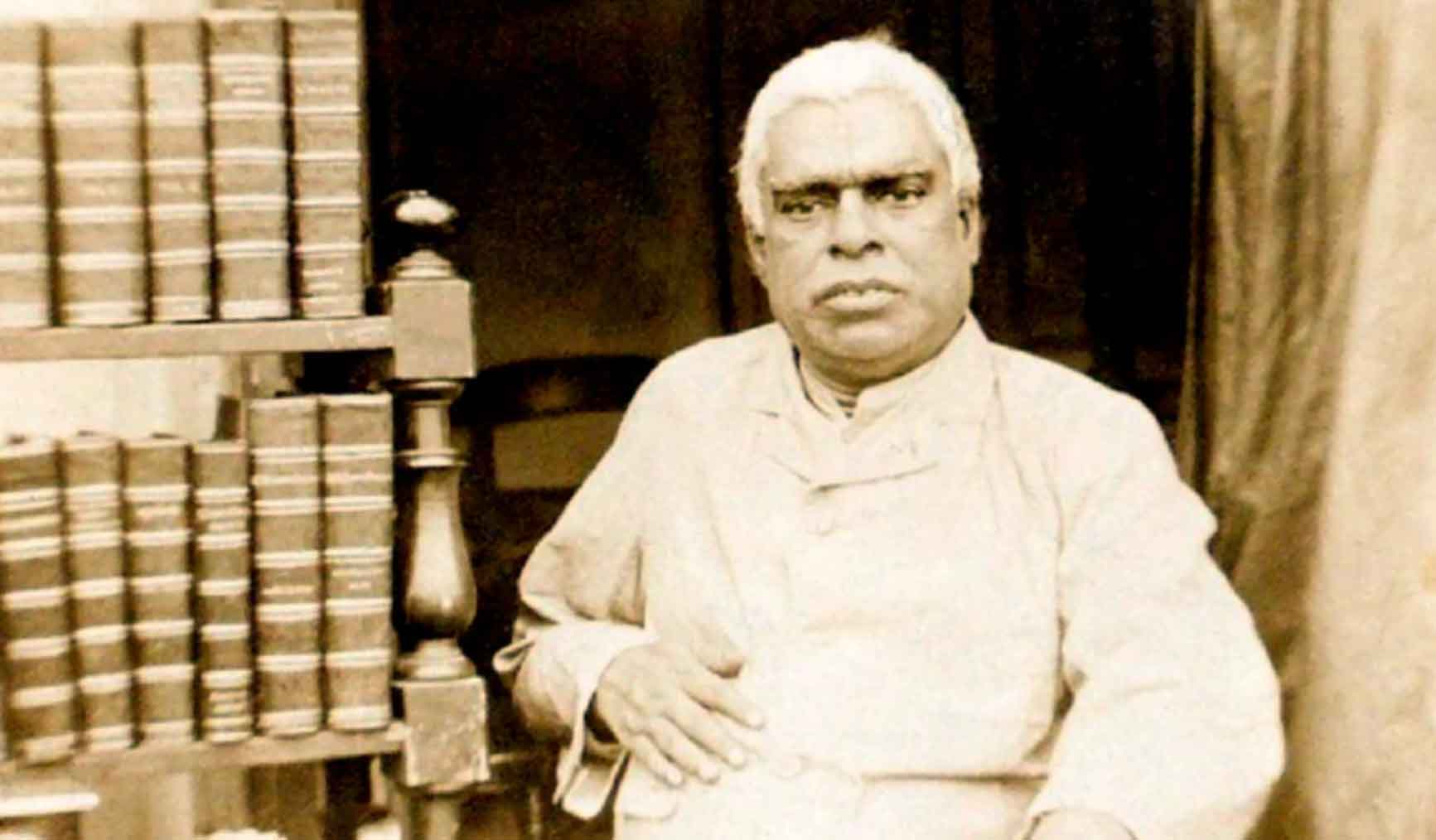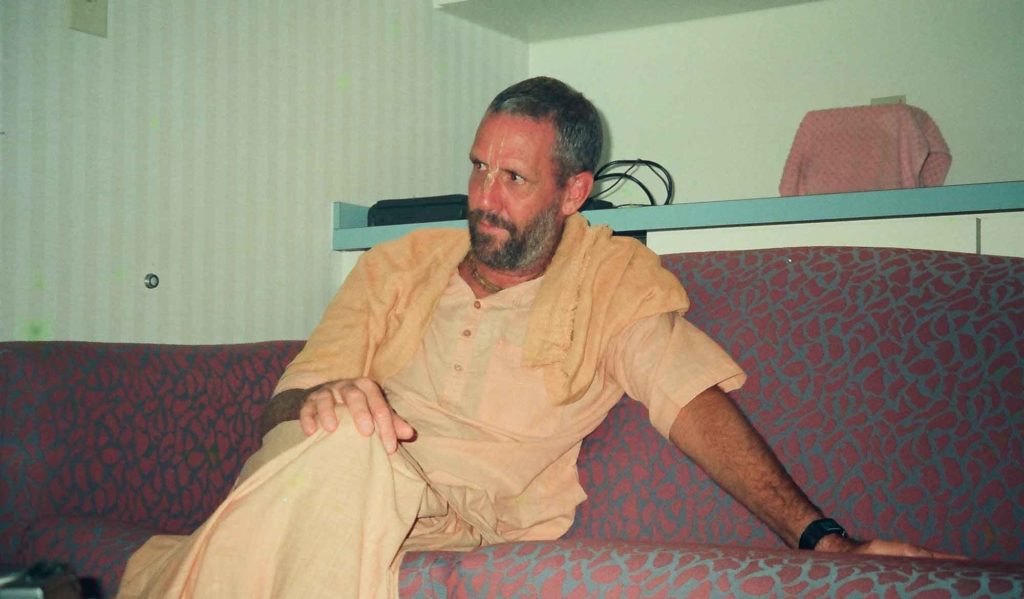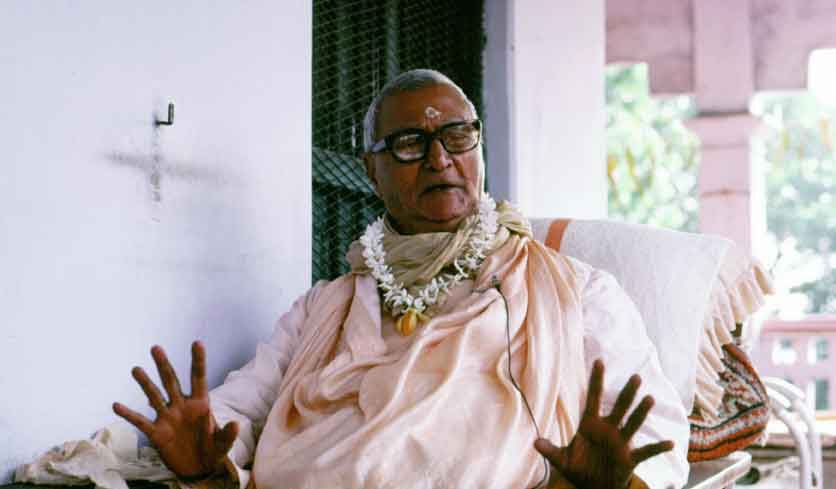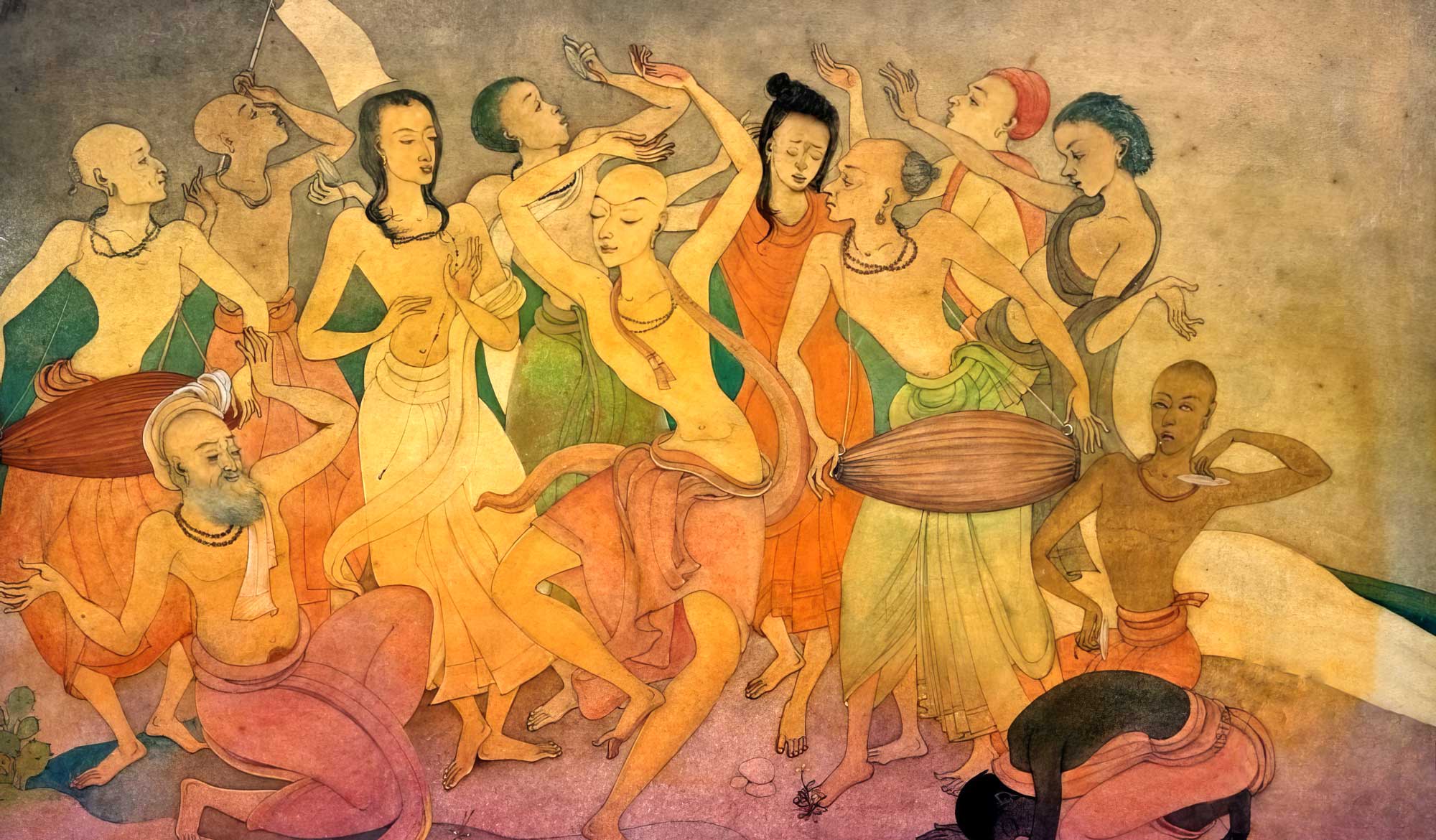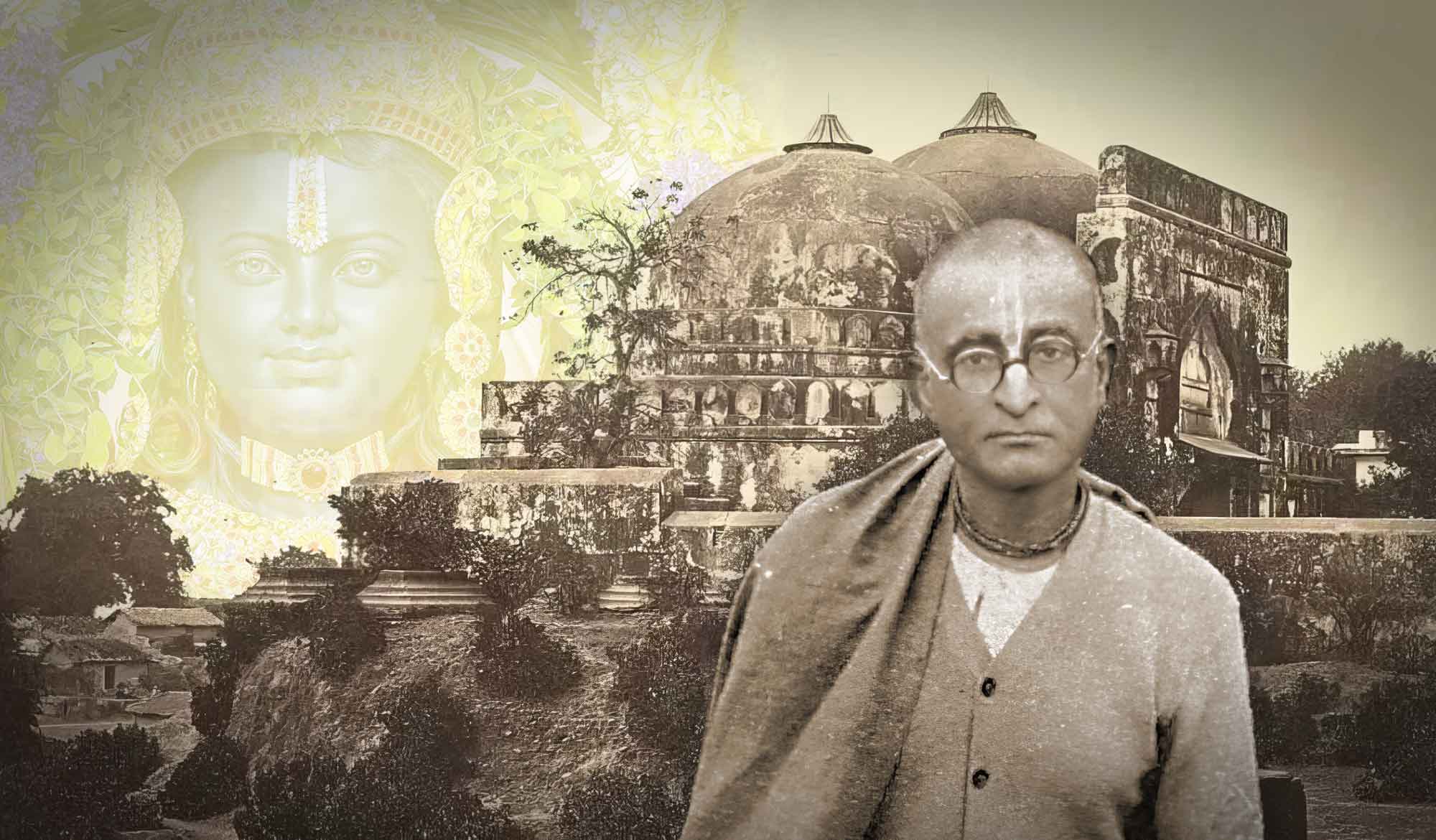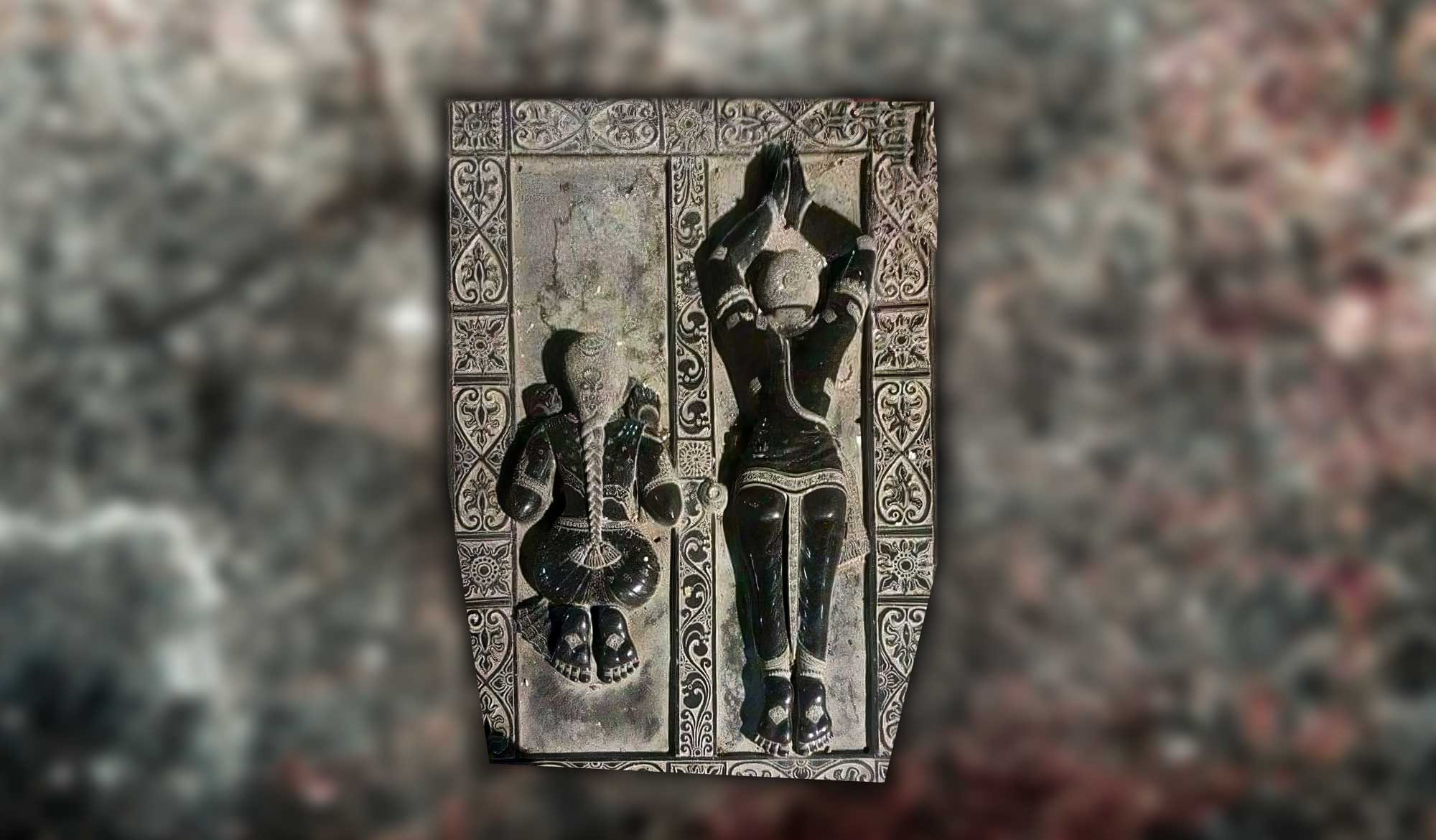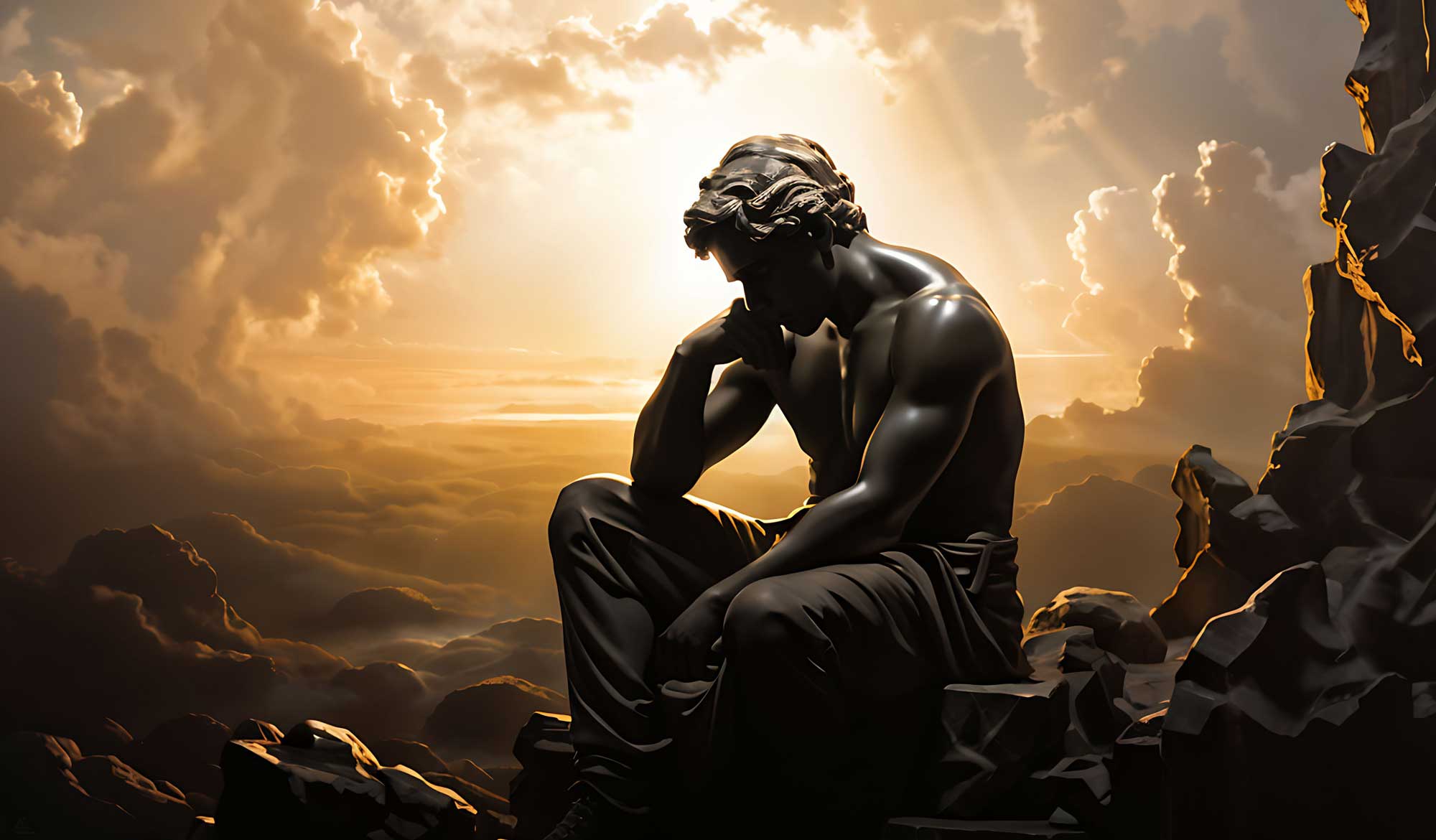Overview
On the eve of the disappearance of Śrīla Ṭhākura Bhaktivinoda, we present Śrīla Śrīdhara Mahārāja's composition, 'Śrī Bhaktivinoda Viraha-Daśakam' (Ten Prayers in Separation of Bhaktivinoda Ṭhākura). Upon reading this prayer, Śrīla Sarasvatī Ṭhākura commented, "Now I am confident that we have one man who is qualified to uphold the standard of our sampradāya."
(1)
hā hā bhaktivinoda ṭhākura guro dvāviṁśatis te samā
dīrghād-duḥkha-bharād aśeṣa-virahād duḥkhīkṛtā bhūr-iyam
jīvānāṁ bahu-janma-puṇya-nivahākṛṣṭo mahīmaṇḍale
āvirbhāva-kṛpāṁ cakāra ca bhavān śrī-gaura-śaktiḥ svayam
Alas, alas! O Bhaktivinoda Ṭhākura, O supreme guru, for twenty-two years this world has been plunged into misfortune, long grief-stricken in your intolerable separation. You are the divine potency of Śrī Gaura, and you graciously made your advent in this earthly plane, being attracted by the living beings’ virtuous deeds performed throughout many lifetimes.
(2)
dīno’haṁ cira-duṣkṛtir na hi bhavat-pādābja-dhūlī-kaṇā-
snānānanda-nidhiṁ prapanna-śubhadaṁ labdhaṁ samartho’bhavam
kintv audārya-guṇāt tavāti-yaśasaḥ kāruṇya-śaktiḥ svayaṁ
śrī-śrī-gaura-mahāprabhoḥ prakaṭitā viśvaṁ samanvagrahīt
Since I am lowly and very wretched, it was not my luck to reach the ocean that bestows the fortune of surrender—the ocean of the ecstasy of bathing in a particle of the dust of your holy lotus feet. Yet due to your magnanimous nature, you gave your grace to the whole universe, personally revealing your super-eminence as the personification of the mercy potency of Śrī Gaurāṅga. (That is, by coming into this world, I received his grace.)
(3)
he deva! stavane tavākhila-guṇānāṁ te viriñcādayo
devā vyartha-manorathāḥ kim u vayaṁ martyādhamāḥ kurmahe
etan no vibudhaiḥ kadāpy atiśayālaṅkāra ity ucyatāṁ
śāstreṣv eva na pāraye’ham iti yad gītaṁ mukundena ca
O Lord, even all the demigods headed by Lord Brahmā feel frustrated by their inability to (fittingly) sing the glories of all your divine qualities. What, then, can be said of the attempt of a fallen soul, a mere human like me? Surely, the learned will never waste their eloquent words eulogising this statement, since even the Supreme Personality of Godhead, Śrī Kṛṣṇa Himself, has sung in the scriptures His celebrated confession, “Na pāraye ’ham: I am unable (to reciprocate your devotion).”
(4)
dharmaś carma-gato’jñataiva satatā yogaś ca bhogātmako
jñāne śūnya-gatir japena tapasā khyāti-jighāṁsaiva ca
dāne dāmbhikatānurāga-bhajane duṣṭāpacāro yadā
buddhiṁ buddhimatāṁ bibheda hi tadā dhātrā bhavān preṣitaḥ
At a time when religion was evaluated in terms of bodily relationship, saintliness was determined by ignorance, and yoga practice was motivated by sensual pleasure; when scholarship was cultivated just for voidism, japa was conducted for the sake of fame, and penance was performed out of vindictiveness; when charity was given out of pride, and on the pretext of spontaneous devotion the most gross, sinful acts were perpetrated—and in all such anomalous situations even the intelligentsia were at loggerheads with one another … at that very time, you were sent by the almighty Creator.
(5)
viśve’smin kiraṇair yathā himakaraḥ sañjīvayann oṣadhīr
nakṣatrāṇi ca rañjayan nija-sudhāṁ vistārayan rājate
sac-chāstrāṇi ca toṣayan budha-gaṇaṁ sammodayaṁs te tathā
nūnaṁ bhūmi-tale śubhodaya iti hlādo bahuḥ sātvatām
As the universally cooling moon is beautified by diffusing its nectarean rays, nourishing the plants and inciting the twinkling of the stars, your holy advent in this world is similarly ascertained as satisfying the pure devotional scriptures (through profound study) and blessing the learned with full-blown happiness (by the perfect axiomatic conclusions descending in divine succession). With your appearance, the ecstasy of the devotees knows no bounds.
(6)
lokānāṁ hita-kāmyayā bhagavato bhakti-pracāras tvayā
granthānāṁ racanaiḥ satām abhimatair nānāvidhair darśitaḥ
ācāryaiḥ kṛta-pūrvam eva kila yad rāmānujādyair budhaiḥ
premāmbho-nidhi-vigrahasya bhavato māhātmya-sīmā na tat
By writing many books and by multifarious methods recognised by the pure devotees, you have demonstrated the preaching of pure devotional service unto the Supreme Lord, for the benefit of the whole world. We have heard of similar achievements in previous times by stalwart scholars such as Śrī Rāmānuja and many other ācāryas; but the glory of you—the very embodiment of the nectar of divine love—does not end (cannot be confined) here.
(7)
yad-dhāmnaḥ khalu dhāma caiva nigame brahmeti saṁjñāyate
yasyāṁśasya kalaiva duḥkha-nikarair yogeśvarair mṛgyate
vaikuṇṭhe para-mukta-bhṛṅga-caraṇo nārāyaṇo yaḥ svayaṁ
tasyāṁśī bhagavān svayaṁ rasa-vapuḥ kṛṣṇo bhavān tat-pradaḥ
Merely the effulgence of His divine abode has been designated by the title ‘Brahma’ in the Vedas, and only the expansion of an expansion of His expansion is sought after with great tribulation by the foremost yogis. The most exalted of the liberated souls shine resplendent as the bumblebees at His lotus feet. The primeval origin of even the original Śrī Nārāyaṇa who is the Lord of the spiritual sky above Brahman: He is the original Supreme Lord, the personification of all nectarean mellows—Śrī Kṛṣṇa —and He is the one that you give.
(8)
sarvācintya-maye parātpara-pure goloka-vṛndāvane
cil-līlā-rasa-raṅginī-parivṛtā sā rādhikā śrī-hareḥ
vātsalyādirasaiś ca sevita-tanor mādhurya-sevā-sukhaṁ
nityaṁ yatra mudā tanoti hi bhavān tad-dhāma-sevā-pradaḥ
Situated in the topmost region of the absolutely inconceivable spiritual sky is the holy abode of Śrī Vṛndāvana-dhāma, in the spiritual planet known as Goloka. There, surrounded by sakhīs, Śrīmatī Rādhikā revels in the mellows of divine pastimes. With great ecstasy, She expands the joy of loving sweetness in the service of Śrī Kṛṣṇa-candra, who is otherwise served in four relationships up to parenthood. You, O Ṭhākura Bhaktivinoda, can give us the service of that holy dhāma.
(9)
śrī gaurāṇumataṁ svarūpa-viditam rūpāgrajenādṛtam
rūpādyaiḥ pariveśitaṁ raghu-gaṇair-āsvāditam sevitam
jīvādyair abhirakṣitaṁ śuka-śiva-brahmādi-sammānitam
śrī-rādhā-pada-sevanāmṛtaṁ aho tad-dātum īśo bhavān
The internal purport is known to Śrī Svarūpa Dāmodara by the sanction of Śrī Gauracandra, of that which is adored by Śrī Sanātana Gosvāmī and distributed by the preceptors realised in transcendental mellows, headed by Śrī Rūpa Gosvāmī; that which is tasted and enhanced by Śrī Raghunātha Dāsa Gosvāmī and followers and carefully protected by the votaries headed by Śrī Jīva Prabhu; and that which (from a respectful distance) is venerated by great personalities such as Śrī Śuka, Lord Śiva, the chief of the demigods, and Lord Brahmā, the grandfather of all beings—O wonder of wonders! the nectarean rapture of servitude unto Śrī Rādhikā—that, too, you can give us
(10)
kvāhaṁ manda-matis tv atīva patitaḥ kva tvaṁ jagat-pāvanaḥ
bho svāmin kṛpayāparādha-nicayo nūnaṁ tvayā kṣamyatām
yāce’haṁ karuṇā-nidhe varam imaṁ pādābja-mūle bhavat-
sarvasvāvadhi-rādhikā-dayita-dāsānāṁ gaṇe gaṇyatām
Where am I, so lowly and fallen, and where are you, the great soul who delivers the universe! O Lord, by your grace, you are sure to forgive my offenses. O ocean of mercy, in the dust of your lotus feet I pray for just this benediction: kindly make my life successful by recommending me for admission into the group of Śrī Varṣabhānavī Dayitā Dāsa, who is the dearmost one in your heart.
Related Articles, Songs and Prayers
- Śrī Gaura-hari Kusuma Stavāṣṭākam by Śrīla Bhakti Rakṣaka Śrīdhara Deva Gosvāmī
- Śrī Kusumañjalī (An Offering of Flowers) by Śrīla Bhakti Rakṣaka Śrīdhara Deva Gosvāmī
- Śrī Nāma Māhātmya (The Glories of the Holy Name) by Śrīla Bhakti Rakṣaka Śrīdhara Deva Gosvāmī
- Śrī Nityānanda Dvādaśakam by Śrīla Bhakti Rakṣaka Śrīdhara Deva Gosvāmī
- Śrīmad Bhaktivinoda Viraha Daśakam by Śrīla Bhakti Rakṣaka Śrīdhara Deva Gosvāmī
- Śrī Śrī Gaurasundara Āvirbhava Vāsare by Śrīla Bhakti Rakṣaka Śrīdhara Deva Gosvāmī
- ‘The Best of Thieves’ – An Illumination by Śrīla Bhakti Rakṣaka Śrīdhara Deva Gosvāmī
- Mā Muñca Pañca-daśakam (Fifteen Verses Praying Not to be Abandoned) by Śrīla Śrīdhara Deva Gosvāmī Mahārāja
- Śrīla Sarasvatī Gosvāmyāṣṭakam by Śrīla Śrīdhara Deva Gosvāmī Mahārāja
- Vṛndāvane Bhajana (Worship in Vṛndāvana) by Śrīla A.C. Bhaktivedānta Swami Prabhupāda
- Vaiśiṣṭyāṣṭaka (Eight Stanzas of Significance) by Śrīla A.C. Bhaktivedānta Swami Prabhupāda
- Svasti No Gaura-vidhur Dadhātu (May the Moon-like Gaura Bestow Auspiciousness) by Śrīla B.P. Purī Mahārāja
- A Prayer Composed on the Occasion of the Disappearance of Śrīla Gadādhara Paṇḍita by Śrīla Bhakti Pramoda Purī Gosvāmī
- Śrī Śrī Gaura Gopāla Praśasti (In Praise of Śrī Śrī Gaura Gopāla) by Śrīla Bhakti Pramoda Purī Gosvāmī
- Viraha-Gītikā (A Song of Separation) by Śrīla Bhakti Pramoda Purī Mahārāja
- Jaya Rādhā-Mādhava by Śrīla Bhakti Gaurava Narasiṅgha Mahārāja
- Purport to Śrīla Prabhupāda-līlā Smaraṇa-Maṅgala Stotram by Śrīla Bhakti Gaurava Narasiṅgha Mahārāja
- Purī Mahārāja’s Praṇāma Mantra by Śrīla Bhakti Gaurava Narasiṅgha Mahārāja
- Śrī Guru-viraha Ṣaṭakam – Six Verses in Separation from Śrī Guru by Swami B.V. Giri
- Śrī Guru Praṇāma Anuvākya – An Explanation of Śrīla Guru Mahārāja’s Praṇāma Mantra by Swami B.V. Giri
Further Reading from the Bhaktivinoda Institute
- Gītā-mālā (A Garland of Songs) by Śrīla Bhaktivinoda Ṭhākura (Songbook)
- Kalyāṇa Kalpataru (‘The auspicious Desire Tree’) by Śrīla Bhaktivinoda Ṭhākura (Songbook)
- Śaraṇāgati (Surrendered to the Lord’s Shelter) by Śrīla Bhaktivinoda Ṭhākura (Songbook)
- Gītāvalī (A Collection of Songs) by Śrīla Bhaktivinoda Ṭhākura (Songbook)
- Bāula Saṅgīta by Śrīla Bhaktivinoda Ṭhākura (Songbook)
- Sevā Lālasā (Hankering for Service) by Śrīla Bhaktivinoda Ṭhākura (Songbook)
- Śrī Godruma-candra Bhajanopadeśa by Śrīla Bhaktivinoda Ṭhākura
- Śrī Kṛṣṇacandra by Śrīla Bhaktivinoda Ṭhākura
- Śrī Gīta Govinda Introduction by Śrīla Bhaktivinoda Ṭhākura
- Poems by Śrīla Bhaktivinoda Ṭhākura
Prema Dhāma Deva Stotram with the Narasiṅgha Sevaka Commentary – Verses 61-65
In verses 61 to 65 of 'Prema Dhāma Deva Stotram', Śrīla Śrīdhara Mahārāja narrates the pastime of Śrī Caitanya at Caṭaka Parvata In Purī and explains how the scriptures produced by Brahmā and Śiva are ultimately searching for the personality of Mahāprabhu who is merciful too all jīvas, no matter what their social position.
Prabhupāda Śrīla Sarasvatī Ṭhākura’s Visit to Ayodhyā
With the forthcoming observance of Śrī Rāma Navamī, we present 'Prabhupāda Śrīla Sarasvatī Ṭhākura’s Visit to Ayodhyā' written by Śrīla Bhaktisiddhānta Sarasvatī Ṭhākura Prabhupāda from The Gaudīyā magazine, Vol 3. Issue 21/ In December 1924, after visiting Benares and Prāyāga, Sarasvatī Ṭhākura visited the birth-site of Śrī Rāmācandra in Ayodhyā.
Śaraṇāgati – The Only Path to Auspiciousness
In this article, 'Śaraṇāgati - The Only Path to Auspiciousness', Dhīra Lalitā Dāsī analyses the process of śaraṇāgati (surrender) beginning with śraddhā (faith). She also discusses the role of śāstra and the Vaiṣṇava in connection with surrender.
Ātma Samīkṣā – The Value of Introspection
In this article, "Ātma Samīkṣā – The Value of Introspection" Kalki Dāsa highlights the importance of introspection in the life of a devotee and especially in relation to the worldly environment that surrounds us. He also explains how transcendental sound influences our capacity to introspect.
Prema Dhāma Deva Stotram with the Narasiṅgha Sevaka Commentary – Verses 61-65
In verses 61 to 65 of 'Prema Dhāma Deva Stotram', Śrīla Śrīdhara Mahārāja narrates the pastime of Śrī Caitanya at Caṭaka Parvata In Purī and explains how the scriptures produced by Brahmā and Śiva are ultimately searching for the personality of Mahāprabhu who is merciful too all jīvas, no matter what their social position.
Prabhupāda Śrīla Sarasvatī Ṭhākura’s Visit to Ayodhyā
With the forthcoming observance of Śrī Rāma Navamī, we present 'Prabhupāda Śrīla Sarasvatī Ṭhākura’s Visit to Ayodhyā' written by Śrīla Bhaktisiddhānta Sarasvatī Ṭhākura Prabhupāda from The Gaudīyā magazine, Vol 3. Issue 21/ In December 1924, after visiting Benares and Prāyāga, Sarasvatī Ṭhākura visited the birth-site of Śrī Rāmācandra in Ayodhyā.
Śaraṇāgati – The Only Path to Auspiciousness
In this article, 'Śaraṇāgati - The Only Path to Auspiciousness', Dhīra Lalitā Dāsī analyses the process of śaraṇāgati (surrender) beginning with śraddhā (faith). She also discusses the role of śāstra and the Vaiṣṇava in connection with surrender.
Ātma Samīkṣā – The Value of Introspection
In this article, "Ātma Samīkṣā – The Value of Introspection" Kalki Dāsa highlights the importance of introspection in the life of a devotee and especially in relation to the worldly environment that surrounds us. He also explains how transcendental sound influences our capacity to introspect.


